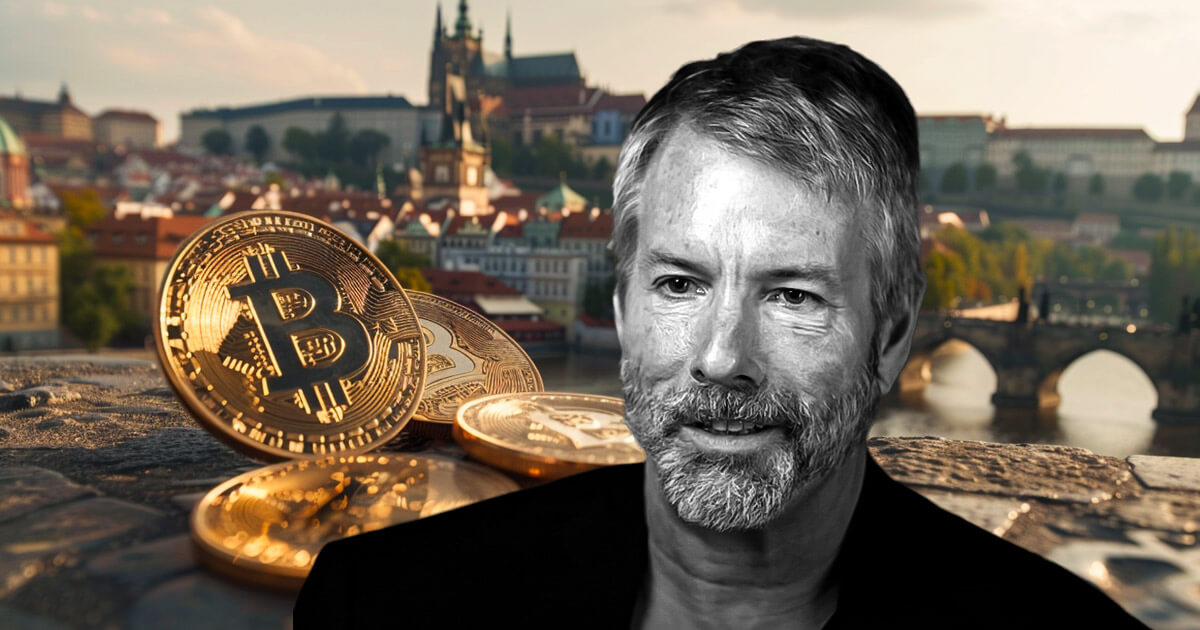
In his keynote at BTC Prague, MicroStrategy CEO Michael Saylor articulated a vision of Bitcoin as the world’s first perfect money, a profound innovation with the potential to reshape economic and political systems worldwide. Drawing parallels to historic scientific revolutions, Saylor positioned Bitcoin as a disruptive economic force, ushering in a new era of financial insight.
Saylor’s presentation seemed more like a sermon than a keynote, reminiscent of a church pastor preaching to his flock about salvation. Unlike a religious leader, Saylor’s sermon focused on reaffirming and encouraging the audience to believe in Bitcoin, not in God, not in himself, not in his company, in a cultural personality, nor in anything other than the self-sovereignty and ‘perfection’ of Bitcoin. One of his closing lines about those who sell Bitcoin was:
“Satoshi forgive them; they don’t know what they’re doing.”
Saylor introduced a concept he called “21 Rules for Bitcoin.” While he acknowledged the subjective nature of these rules, he formulated them as guiding principles for understanding and embracing Bitcoin. According to Saylor, those who understand Bitcoin invariably choose to invest in it, while those who don’t understand it tend to criticize it. This dichotomy highlights a fundamental paradigm shift that challenges traditional perspectives on money and value.
Michael Saylor’s 21 Rules for Bitcoin
- Those who understand Bitcoin buy Bitcoin. Those who don’t criticize Bitcoin.
- Everyone is against Bitcoin before they are for it.
- You know you understand Bitcoin, while you know you will never fully understand Bitcoin. You’re never done learning about Bitcoin.
- Bitcoin is powered by chaos.
- Bitcoin is the only game in the casino where we can all win.
- Bitcoin won’t protect you if you don’t wear the armor.
- Bitcoin is the only thing in the universe that you can actually own.
- Everyone gets Bitcoin at the price they deserve.
- Buy Bitcoin only with the money you can’t afford to lose.
- Tickets to escape the matrix are priced in Bitcoin.
- Bitcoin insight is limited to those who need to know.
- All your models will be destroyed.
- The cure for economic ills is the orange pill.
- Be for Bitcoin, not against fiat.
- Bitcoin is for everyone.
- Learn to think in Bitcoin.
- You don’t change Bitcoin; it changes you.
- Laser eyes protect you from endless lies.
- Respect Bitcoin, otherwise you will be made a clown.
- Don’t sell your Bitcoin.
- Spread Bitcoin with love.
One of Saylor’s key points was Bitcoin’s intrinsic value as “perfect money,” contrasting it with historical and contemporary forms of currency such as shells, tobacco, and fiat money. He emphasized that Bitcoin’s value lies not in the valuation of assets, but in realizing its absolute value in a distorted financial landscape. This shift in perspective, akin to a scientific revelation, forces individuals to break conventional thinking and embrace Bitcoin’s innovative framework. He reiterated that everyone gets Bitcoin for the price they deserve and seemed content with missing out on Bitcoin at $950.
“I got the price I deserved, and I started buying at $9,500, but that’s OK, I’ll buy it at $95,000 and $950,000, and I’ll buy it at $8 million.”
Saylor also highlighted Bitcoin’s unique position as an “economic virus” that will permeate through layers of society and technology over time. He argued that an understanding of Bitcoin requires an appreciation of its long-term potential and impact on future generations. This perspective requires constant learning and adaptation, recognizing that Bitcoin’s influence will evolve with technological advancements and societal structures.
Saylor focused on the volatility and inherent risk of traditional investments and presented Bitcoin as a hedge against chaos and entropy. He compared Bitcoin to a refuge in a world marked by instability, drawing a historical analogy to the stability of Swiss banks during World War II. This perspective views Bitcoin as a resilient asset capable of withstanding and benefiting from global economic turmoil.
“Are you profiting from chaos or stopping it? You can’t stop entropy […] Bitcoin is the house of chaos – anyone who wants to play in that game can keep winning.”
Saylor further articulated that Bitcoin represents true ownership in a world where external entities control most assets. He emphasized the decentralized and secure nature of Bitcoin, making it the first asset in human history that individuals can truly own without having to rely on intermediaries. This principle of ownership is fundamental to understanding Bitcoin’s value proposition. He argued against the concept of only investing what you do can afford to lose, instead advocate investing the money you earn can not afford to lose in Bitcoin.
“When you say you should only invest with money you can afford to lose, you are making a moral equivalence to gambling with the odds against you. […] No one is saying just put the kids on the school bus and I don’t have to come back.”
Finally, Saylor emphasized the importance of spreading Bitcoin adoption through positive engagement rather than confrontation. He advocated a compassionate approach to educating others about Bitcoin, emphasizing that resistance often comes from a lack of understanding. By promoting Bitcoin with love rather than hate, proponents can promote broader acceptance and accelerate global adoption of this revolutionary technology.
Saylor’s keynote at BTC Prague was a call to embrace the transformative power of Bitcoin. His “21 Rules of Bitcoin” is a roadmap for understanding and navigating this new economic paradigm, emphasizing continuous learning, resilience to chaos, and a compassionate approach to spreading the benefits of Bitcoin.







Leave a Reply